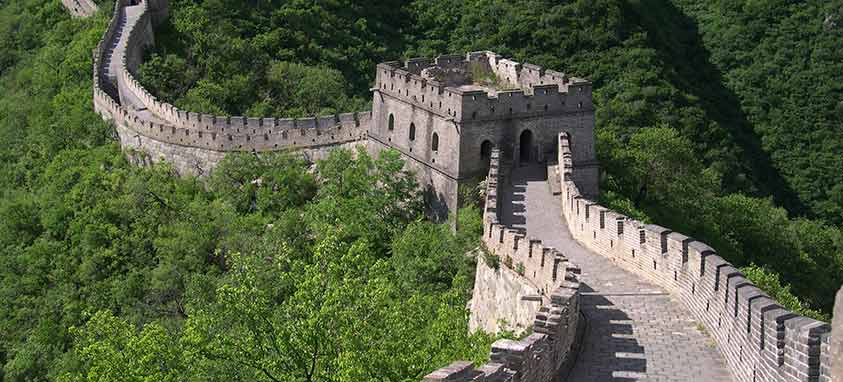The Great Wall of China, perhaps the country’s most iconic attraction, is gradually disappearing due to a variety of factors. It is estimated that one-third of the wall, which has been named a UNESCO World Heritage site, has been destroyed. Whole sections have large, gaping holes, while other sections have crumbled apart.
“The destruction of the Great Wall has natural and human causes,” Dong Yaohui, vice chairman of the nonprofit Great Wall Society, told NBC News. “The urgent task is to protect what is left.”
Government efforts to protect the dilapidated wall face obstacles partially because the wall stretches between 5,600 and 13,000 miles. Concerned historians are calling for a systematic conservation plan.
Fall of the Great Wall of China
There are numerous reasons the Great Wall of China has fallen into such a state of disrepair. Some of the causes are entirely natural—the wall is constantly exposed to the elements and has weathered over the course of many years. Sun and wind have taken their tolls, and mud sections of the structure have collapsed and washed away during heavy rainstorms. Wild plants are growing on certain parts of the wall, further deteriorating it. In addition, the wall is subject to erosion from sandstorms. In some places, the wall height has shrunk from 16 feet to less than 7 feet.
The Great Wall is also subject to human challenges. Some sections, especially near major cities, were unceremoniously knocked down because they sat in the path of construction. A huge influx of tourists from China and abroad have added to the damage—parts of the wall have been vandalized with graffiti, and many tourists pocket “souvenirs” of the wall, even though they are not supposed to. Poor Chinese villagers in the provinces are also to blame for destruction of the wall. Many steal bricks to build homes for themselves, or to sell to tourists.
Officially the Chinese government can fine anyone 5,000 yuan ($805) for tampering with bricks from the Great Wall of China, however no specific organization oversees this and the regulations are rarely enforced.
History
The Great Wall of China is a series of fortifications made of stone, brick, tamped earth, wood, and other materials, originally built along the northern borders of China to protect the empires against invasions. Some of the oldest parts of the wall were built 220–206 BC by the first Emperor of China, however little of that original wall remains. Over the years, many parts of the wall have been rebuilt or enhanced.
Most of the existing wall today was built between the 14th and 17th centuries, during the Ming dynasty. Unlike earlier portions of the wall, sections built during this time period were made from bricks instead of mud, so they were stronger.





